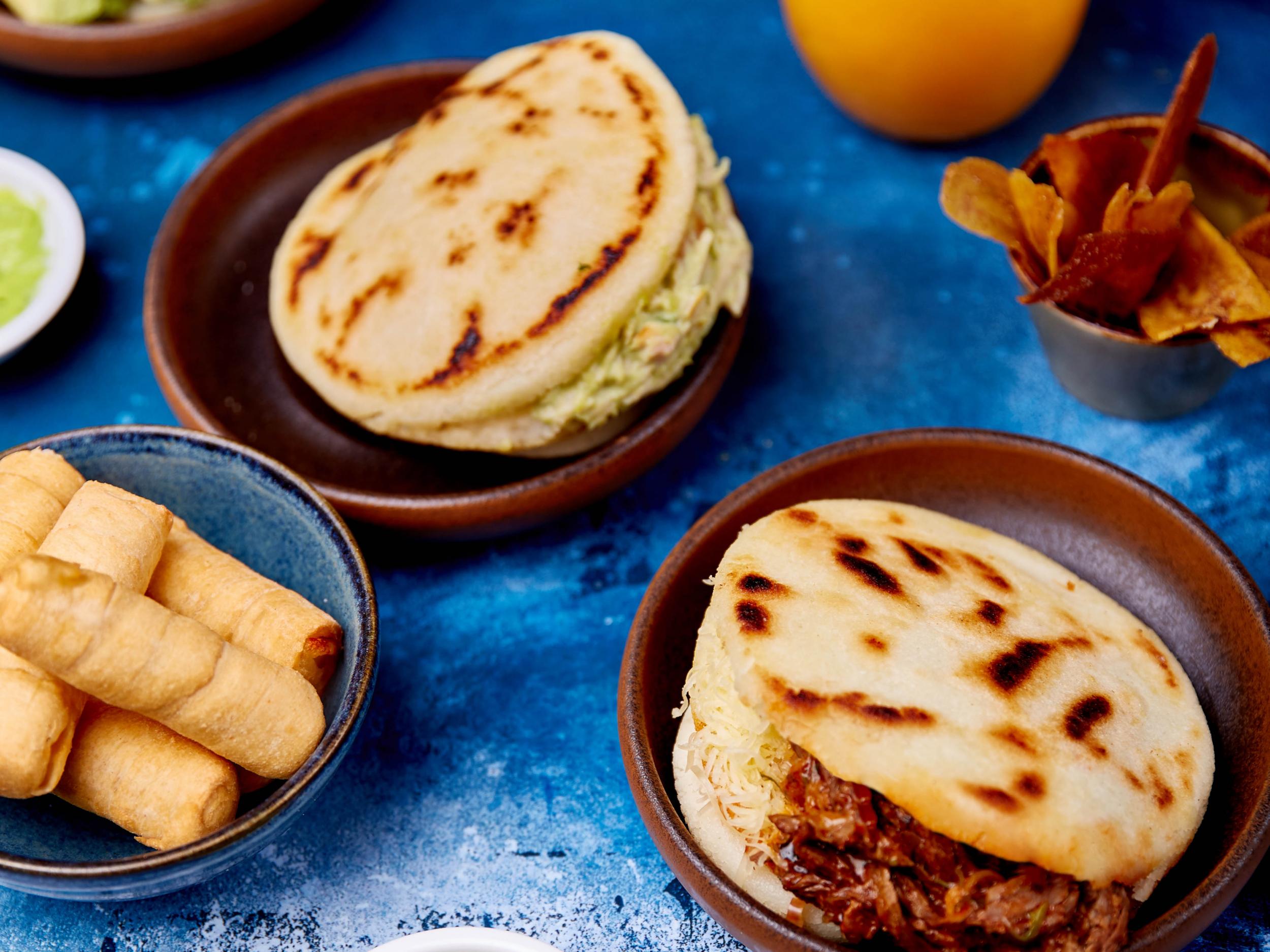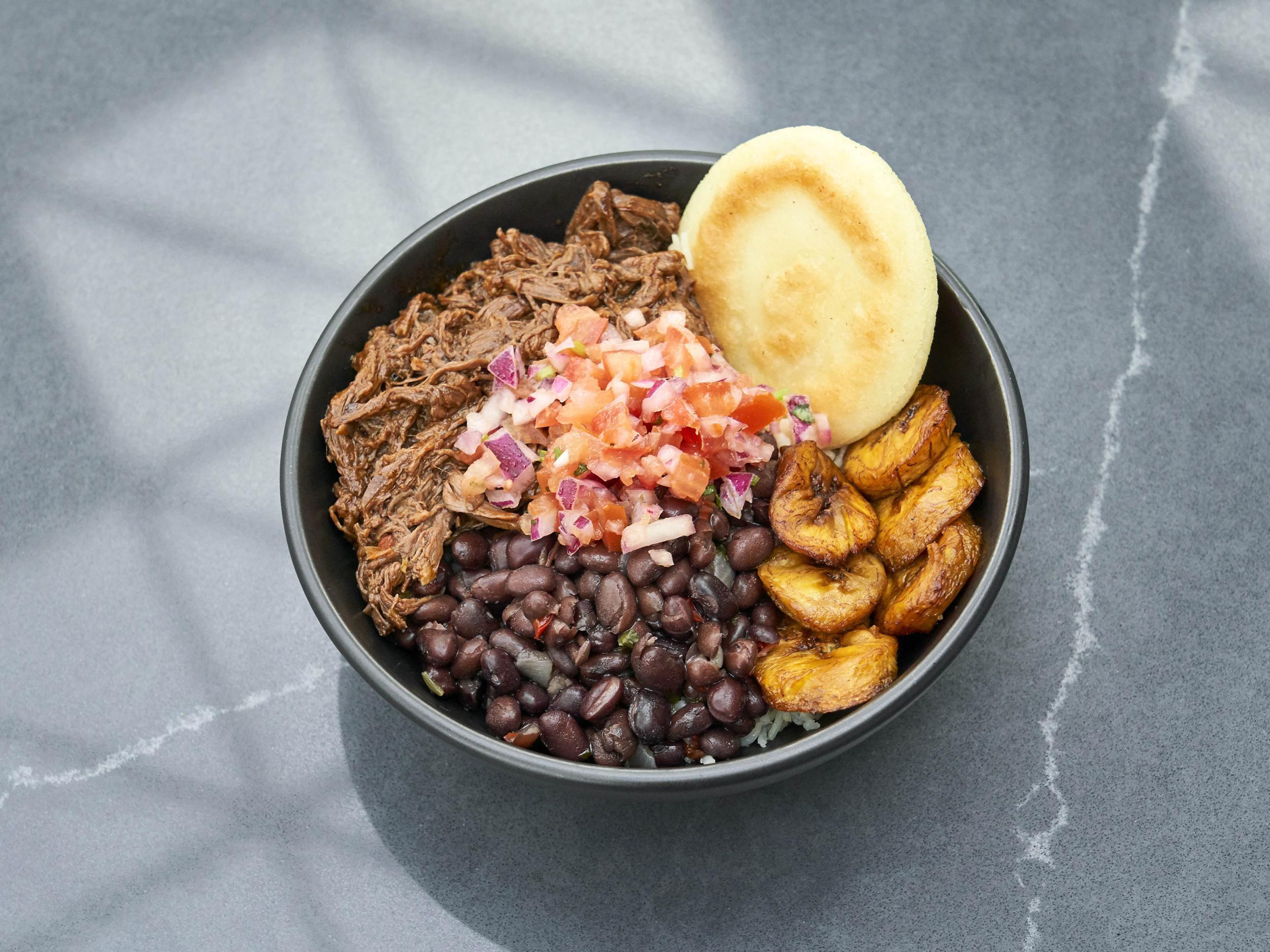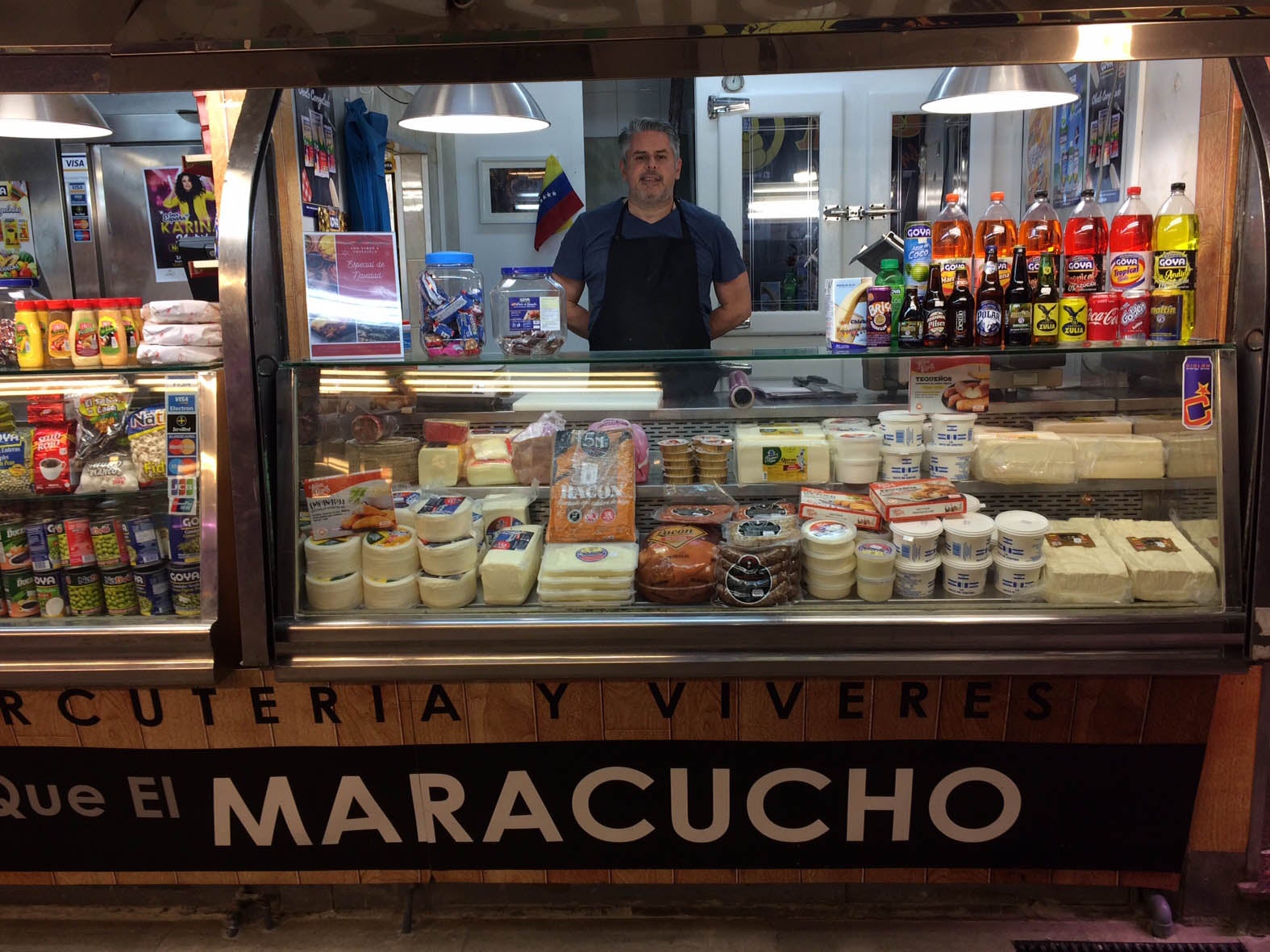How Venezuelan food is slowly finding its way to the UK
You may already be familiar with the Colombian arepa, but Venezuela’s is bigger and better – and political unrest is driving its spread to other countries, finds Philip Sweeney

Venezuela, once one of Latin America’s richest and most animated countries, is grappling now with the unfolding Covid-19 crisis in which it is estimated to be one of the world’s least medically prepared nations – and, much like the restaurant industry worldwide, the arrival of Venezuelan cooking on the international scene is on indefinite hold.
It’s not often that a national dish comes with a side order of geopolitics and scuffling demonstrators, as is the case with the Venezuelan corn bun’s bracing arrival on the London food scene. In January, a crowd of protesters with placards denouncing “imperialist stooges” surrounded the Bethnal Green cafe Arepa and Co, and people attending a function inside emerged to trade insults and throw beer.
The cause of the demonstration was the visit of a politician from Caracas: the suave 36-year-old opposition leader Juan Guaido, fresh from a meeting with Boris Johnson. Guaido led the singing of the Venezuelan national anthem and thanked London for welcoming him as it had Simon Bolivar, “The Liberator”, two centuries earlier.
The presence of Guaido and Venezuelan food’s growth around the world are in fact linked, as both are consequences of the collapse of a country whose vast oil wealth made it one of Latin America’s richest and most cosmopolitan countries.
In 1999, Venezuela’s then president, Hugo Chavez, installed the socialist regime whose current leader, Nicolas Maduro, has accelerated the ruin of the country’s economy, driving 2.5 million citizens into exile.
Maduro hangs on to power, backed by the army and a rump of nations led by Russia, China and Cuba. Meanwhile, Guaido claims to be the legitimate president and has the support of many countries, including the UK. So London, like most other capitals, now has two competing Venezuelan ambassadors.
Clouds and silver linings, though: the great Venezuelan diaspora has spread the country’s food far and wide, with the arepa – while not exactly threatening the pizza – becoming increasingly visible. The dish has overtaken its more simple Colombian cousin – which is mostly filled with cheese or egg – of the same name, and is already familiar to Latin music lovers in the UK thanks to the food stalls at London concerts.
Unlike the plain Colombian arepa, the Venezuelan version is stuffed with fillings such as ground beef, chicken, the ubiquitous grated cow’s milk cheese from the llanos (plains), the guacamole equivalent guasaca, and aji pepper sauce. Other common Venezuelan dishes include tequenos (cheese-filled fried batons), cachapas (cornflour pancakes), and, especially around Christmas, the leaf-wrapped, steamed parcels known as hallacas, a version of the pan-Latin tamales.

A couple of months ago, arepas took a step into the British mainstream with the opening of Sabroso, the first areparia in a mass-market food court, at Westfield in Shepherd’s Bush. Sabroso is the creation of two Venezuelan brothers, Gabriel and Jose-Luis Gonzalez, exiles from the early Chavez years, who started their catering career by surfing the wave of a fashion for Peruvian food, opening Lima Floral in Covent Garden, before noting that the geo-food climate was ripe for a fully commercial Venezuelan enterprise.
London may be coming on nicely, but the rest of the UK is still a junior member of the Venezuelan food diaspora, with neighbouring Colombia the first to make a go of it. Imports have almost quadrupled for the special harina PAN – a brand of the unique yellow cornflour, related to polenta – which has become as much a Venezuelan cultural symbol as Bolivar’s white horse.
In a recent visit to the city of Cartagena in Colombia, I sat outside a cafe – staffed by Venezuelan chefs and waiters – talking to a Venezuelan food researcher about the entrepreneurial flair of expatriate Venezuelans in supplying the extra tonnes of flour and other products. “I was never personally attacked by regime militiamen”, the researcher said. “The reason I left was that I’m a sociable guy and I realised one day that practically all my friends had gone.”
After Colombia and the great Latin melting pot of Miami, European destinations have also attracted Venezuelans who have had to leave the country. Chief among them is Madrid, where focal points include the Mercado de Maravillas, a big covered market in the somewhat Brixton-like district of Tetuan. Here I met stallholder Angel Mora, an anti-Maduro activist who left after a beating by militiamen and now sells imported products both to exiles and to the Maduro government’s ambassador, who keeps a low profile but apparently sends his chauffeur for shopping.

The dozens of Venezuelan restaurants in Madrid now include interesting newcomers such as Apartaco and El Atelier de Dina, where the menu has gone far beyond arepas into the realms of regional specialities such as patacon – plantain – in a cheese, pepper and tomato sauce from the Caribbean coast, and dishes from the owner’s native state such as cachalupa (a sort of pie of lasagne), pepito Larense (a bread pizza topped with veal, chicken and other ingredients), and breadcrumbed, fried llanera cheese with red-pepper jam that has nostalgic clients “crying with emotion”. Even the venerable Complutense University of Madrid has entered the fray, with a research programme designing a carrot-enhanced, extra-nutritious arepa for the impoverished neighbourhoods of Caracas.
In the UK, we haven’t yet got the regional specialities, never mind university-honed super-buns. Here the classic arepa still rules. Gabriel Gonzalez is fine tuning and slimming down his menu in Sabroso, introducing trios of mini-arepas, and a Latinised version of Hawaiian poke bowls – a sort of fusion of the poke’s raw-fish ceviche and the Venezuelan national dish, pabellon criollo (a platter of rice, beans, plantains, meats and the spicy aji dipping sauce). Sabroso has also introduced a British touch, with cheddar or halloumi as alternatives to the Venezuelan cheese.
So what about exporting the concept back to its homeland? Not such a daft idea, in fact, as the upper end of the surprisingly complex Venezuelan catering scene has begun to recover.
Part of the reason is that – in a new echo of Cuba, Venezuela’s role model – Venezuelan citizens with access to US dollars are able to order a decent range of goods, while the hoi polloi have to queue to buy toilet paper with barrow-loads of bolivars, the almost worthless national currency.
The Venezuelan rum industry – which makes several internationally prized brands, notably Santa Teresa and Diplomatico – is in good health, however, as its citizens are obliged to abandon the increasingly expensive favourite, whisky.
Might things one day reverse direction, with a restored country, a functioning government, and the opening of the first Caracas branch of Sabroso of London? “Never say never,” replies Gabriel Gonzalez, sounding simultaneously optimistic and incredulous. As indeed many Venezuelans might feel.
Join our commenting forum
Join thought-provoking conversations, follow other Independent readers and see their replies
Comments
Bookmark popover
Removed from bookmarks